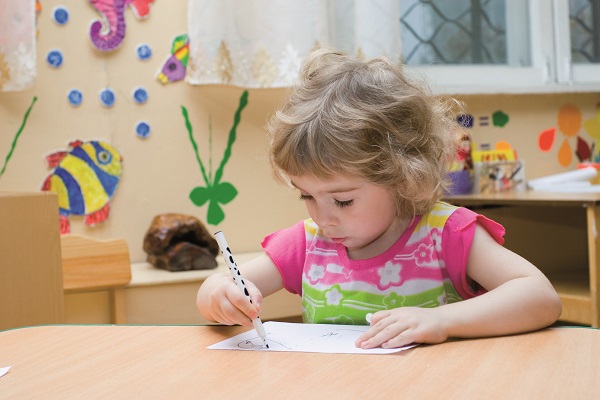The growing awareness of girls with autism needs to continue. Gareth D Morewood examines what this understanding means for schools.

Increasing research into autism will evidently lead to more awareness and a better understanding of pupils’ needs (see References below for a list of current research). However, as Dr Judith Gould, Consultant Clinical Psychologist and Director at The Lorna Wing Centre for Autism, expressed recently:
‘Autism is more diverse than originally thought, with new ideas being put forward every day. In fact, it's a case of 'the more we know, the less we know', particularly in how gender affects individuals with autism.’
The truth about gender
Gender and autism has come to public attention recently as there appears to be a misconception that autism is a condition that only affects boys, at least this is impression the media tends to give.
However, even though males represent 4/5 of the autistic population that still leaves 20% as women (GirlswithAutism) who do not get adequate support.
Dr Lorna Wing from the MRC Social Psychiatry Unit found in her paper ‘Sex ratios in early childhood autism and related conditions’ that amongst the high-functioning autism group there were as many as 15 times more men and boys than women and girls.
Yet when considering similar populations with learning difficulties as well as autism the ratio of men and boys to women and girls was closer to 2:1. This implies a significant under-diagnosis of girls with regard to needs on the autistic spectrum.
Getting it talked about
This article from The Telegraph ‘Too many suffer in silence': Why we urgently need to talk about autism and girls’ made autism a talking point as celebrity Carrie Grant spoke openly about the problems she had getting a diagnoses for her two daughters, both on the autistic spectrum. ‘Way too many girls are suffering in silence, not getting the support they need,’ says Carrie.
More recently, The Guardian reported that schools struggle to identify and appropriately support girls with autism.
What this means for schools
There is a growing need to consider how females on the autism spectrum present differently from males and what their needs are as our support in schools should also be different to reflect those needs.
A better understanding of girls with autism in school has implications for how established systems operate, processes for diagnosis and for the types of interventions offered.
How do autistic girls differ from boys?
-
Boys with autism tend not to appear motivated to be socially interactive, but girls on the spectrum do. Girls however, have a history of failure in achieving and maintaining friendships which if un-met in school can limit life-chances.
-
Girls are more likely to be able to follow social actions by delayed imitation because they observe other children and copy them, often masking the reality of a diagnosis.
-
Girls often have more active imaginations and engage more in pretend play.
-
Boys may display outward behaviours where girls may appear unwell or passive and avoid daily demands (which is why many go un-noticed in schools).
-
Girls with autism often have interests very similar to those of other girls – animals, horses, classical literature – and therefore are not seen as unusual. It is the quality and intensity of these interests that differentiate them from their peers
-
A Stanford University School of Medicine study indicated that girls with autism display less repetitive and restricted behaviour than boys do.
Mental health issues
-
Historically anorexia nervosa has sometimes been labeled as ‘female Asperger’s’, primarily due to around one fifth of girls with anorexia displaying some traits specific to needs on the autistic spectrum.
-
Usually it isn’t until secondary school and puberty that some mental health issues manifest themselves which often lead to girls being isolated and at risk of being bullied. This can result in girls being depressed and quiet rather than having a crisis or exhibiting outwardly aggressive behaviour.
-
Sometimes these anxieties are indicated by altered behaviours: lower grades in school, low mood, obsessive bahaviour and difficulty with sleep patterns.
-
Rivet and Matson (2011) found that those who later had a diagnosis initially were thought to have learning difficulties, personality disorders, obsessive-compulsive disorder or eating disorders.
As the evidence grows a different diagnostic criteria for girls may be more appropriate to ensure this under-identified group are appropriately supported.
My Top Tips
What to read next from Optimus Education
Links
References
-
Cridland, E. K., Jones, S. C., Caputi, P., & Magee, C. A. (2014), Being a girl in a boys’ world: Investigating the experiences of girls with autism spectrum disorders during adolescence. Journal of Autism and Developmental Disorders, 44(6), 1261-1274.
-
Gould, J. and Ashton-Smith, J. (2011), Good Autism Practice (GAP), Volume 12, Number 1, May 2011, pp. 34-41(8)
-
Moyse, R., & Porter, J. (2015), The experience of the hidden curriculum for autistic girls at mainstream primary schools. European Journal of Special Needs Education, 30(2), 187-201.
-
Ranson, N. J., & Byrne, M. K. (2014), Promoting peer acceptance of females with higher-functioning autism in a mainstream education setting: A replication and extension of the effects of an autism anti-stigma program. Journal of Autism and Developmental Disorders, 44(11), 2778-2796.
-
Rivet, T. T. and Matson, J. L. (2011) Review of Gender Differences in Core Symptomatology in Autism Spectrum Disorders, Research in Autism Spectrum Disorders. 5 (3) 957-976.
